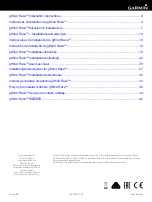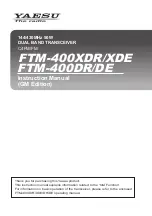
• The transducer should also be mounted in a location where no load will be
applied to the transducer during launching, lifting, trailering and storage of
the vessel.
6.2 Transducer angle requirements
The face of the transducer must be set to an appropriate angle.
•
A
— For best results the transducer face should usually be angled so that it
is parallel to the waterline whilst the vessel is underway.
•
B
— Tilting the transducer down slightly may be required for best results
on high speed vessels and vessels that run bow-high.
•
C
— Tilting the transducer upwards is not recommended as this can cause
aeration across the transducer face.
6.3 EMC installation guidelines
Raymarine® equipment and accessories conform to the appropriate
Electromagnetic Compatibility (EMC) regulations, to minimize electromagnetic
interference between equipment and minimize the effect such interference
could have on the performance of your system.
Correct installation is required to ensure that EMC performance is not
compromised.
Note:
In areas of extreme EMC interference, some slight interference may be
noticed on the product. Where this occurs the product and the source of
the interference should be separated by a greater distance.
For
optimum
EMC performance we recommend that wherever possible:
• Raymarine® equipment and cables connected to it are:
– At least 1 m (3.3 ft) from any equipment transmitting or cables carrying
radio signals e.g. VHF radios, cables and antennas. In the case of SSB
radios, the distance should be increased to 2 m (6.6 ft).
– More than 2 m (6.6 ft) from the path of a radar beam. A radar beam
can normally be assumed to spread 20 degrees above and below the
radiating element.
• The product is supplied from a separate battery from that used for engine
start. This is important to prevent erratic behavior and data loss which can
occur if the engine start does not have a separate battery.
• Raymarine® specified cables are used.
• Cables are not cut or extended, unless doing so is detailed in the
installation manual.
22
Summary of Contents for RVM-100
Page 2: ......
Page 4: ......
Page 12: ...CHAPTER 3 PRODUCT AND SYSTEM OVERVIEW CHAPTER CONTENTS 3 1 Product overview page 13 12...
Page 15: ...CHAPTER 4 PARTS SUPPLIED CHAPTER CONTENTS 4 1 Parts supplied page 16 Parts supplied 15...
Page 50: ...CHAPTER 14 SPARES AND ACCESSORIES CHAPTER CONTENTS 14 1 Accessories page 51 50...
Page 52: ......
Page 55: ......
















































